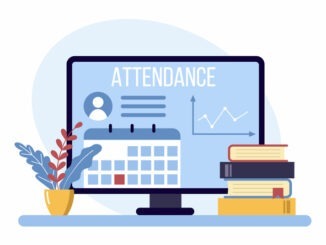
Helen Burge, deputy COO at The Priory Learning Trust, discusses how you can make your school more sustainable
Gruenert and Whitaker (2017) described school culture as, “Guiding beliefs and values, a social indoctrination of unwritten rules learnt to fit into a particular group, ‘the way we do things around here’, ‘software for the mind’, ‘the default mode of behaviour’ and so on”.
If you are the only one, or one of a handful of people, within your school raising and maintaining the issue of sustainability and reducing the school’s carbon footprint, you might have discovered that it is complicated to change your school’s guiding beliefs and values.
The visible part of an iceberg is called the tip. In Hall’s Iceberg Culture Model, see Figure 1, below, it is the tip which contains all the visible aspects of the organisation’s culture – vision, strategy, goals, policies, procedures, language and behaviour. Some people describe this as ‘the what’ or ‘the way we say we get things done’ in an organisation. It is explicit, taught and conscious; it’s easy to see.

Around 90% of an iceberg is submerged below the water; if parallels are drawn with the natural world, then what cannot be seen of an organisation ‘under the water’ goes deeper and is potentially more dangerous than that which is visible above the water. It is ‘the why’ or ’the way we really get things done’.
This is why it is so important that the sustainability agenda becomes deeply embedded within your educational setting; it’s not just a token that you can see, a label or a logo added to your website, but a deeper belief, a value which is threaded through every aspect of school life – from curriculum to procurement and estates. It incorporates, and requires, all stakeholders to get involved and do their part, whether that’s the students setting up and running Eco School clubs, the PTA organising events and following the school’s ban on single use plastic, teachers giving up their addiction to laminating everything for a display, the admin team switching to printing double-sided or even not printing at all, catering managers creating meat-free menus or the trustees and governors endorsing potentially more expensive, but greener, energy suppliers and, of course, everyone turning off the lights when they leave an empty room.
There will be quick wins and longer-term projects (for example, heat decarbonisation), depending on your setting and where you are on the journey to net zero. If you are a PFI school there is an even bigger battle involved in creating a green school and I hope the final version of the DfE’s Sustainability and Climate Change Strategy will directly address that. One thing is for sure; as Robert Swan says:
“The greatest threat to our planet is the belief that someone else will save it.”
So start taking the first steps – or start taking bigger braver steps on your school’s sustainability journey.
To find out more about how you can become a more sustainable school come and join Helen at her seminar at EdExec LIVE SOUTH in London on 9th June 2022.
To register your interest for free or discounted tickets email [email protected] quoting the subject line ‘I want to learn more at EdExec LIVE!’



Be the first to comment